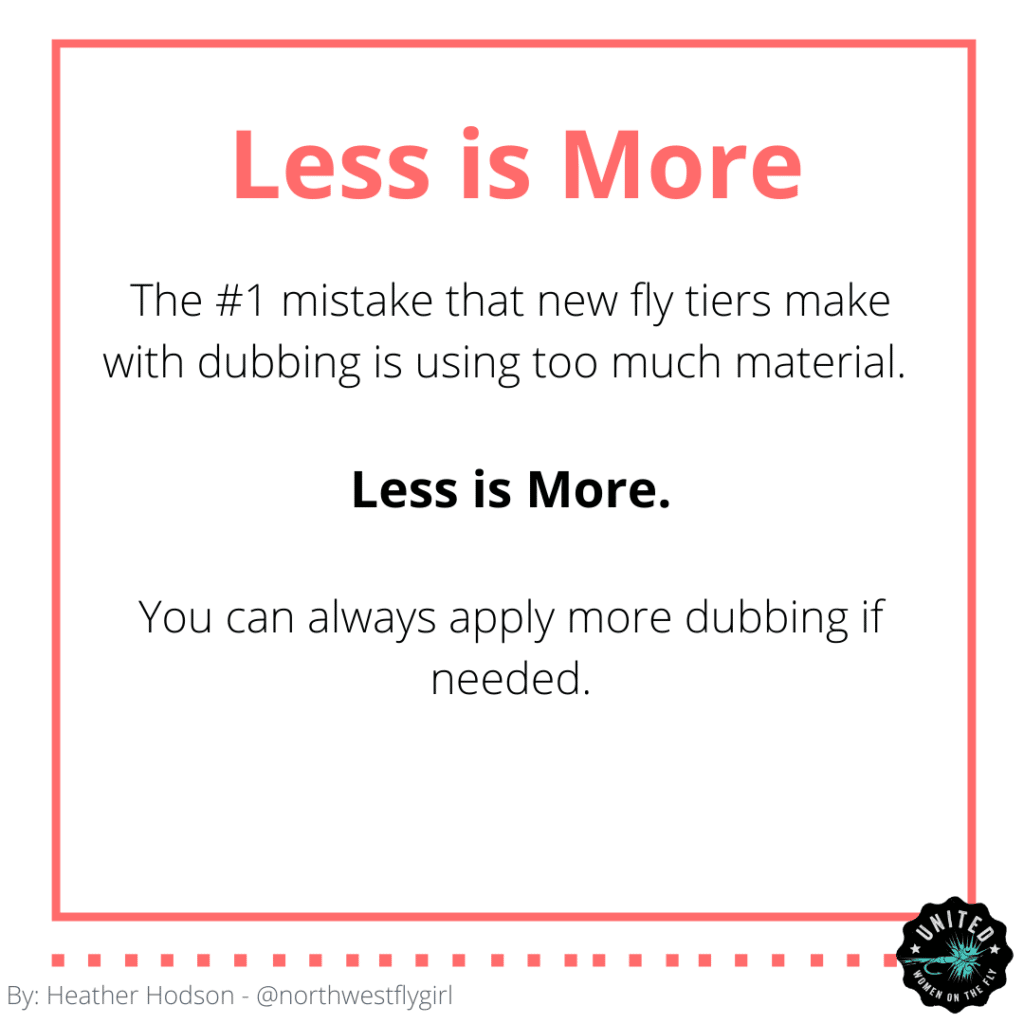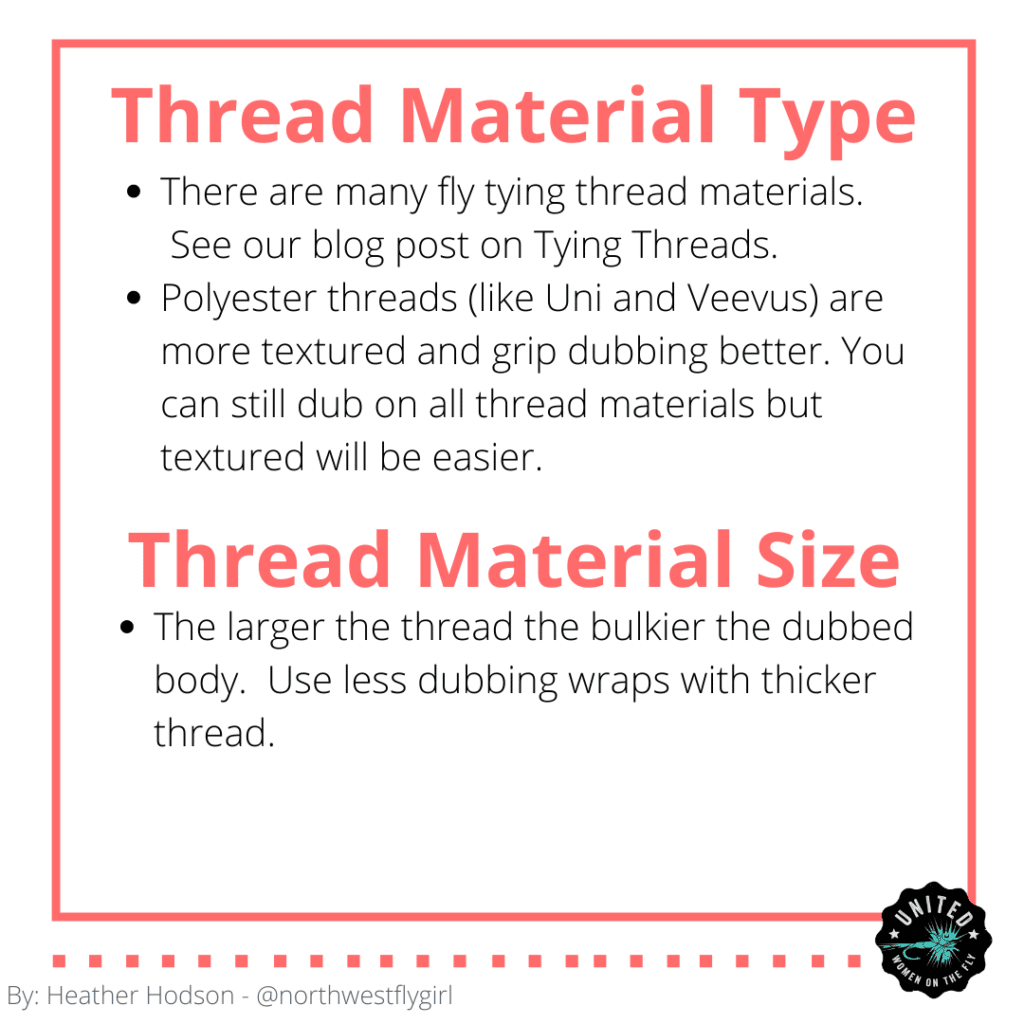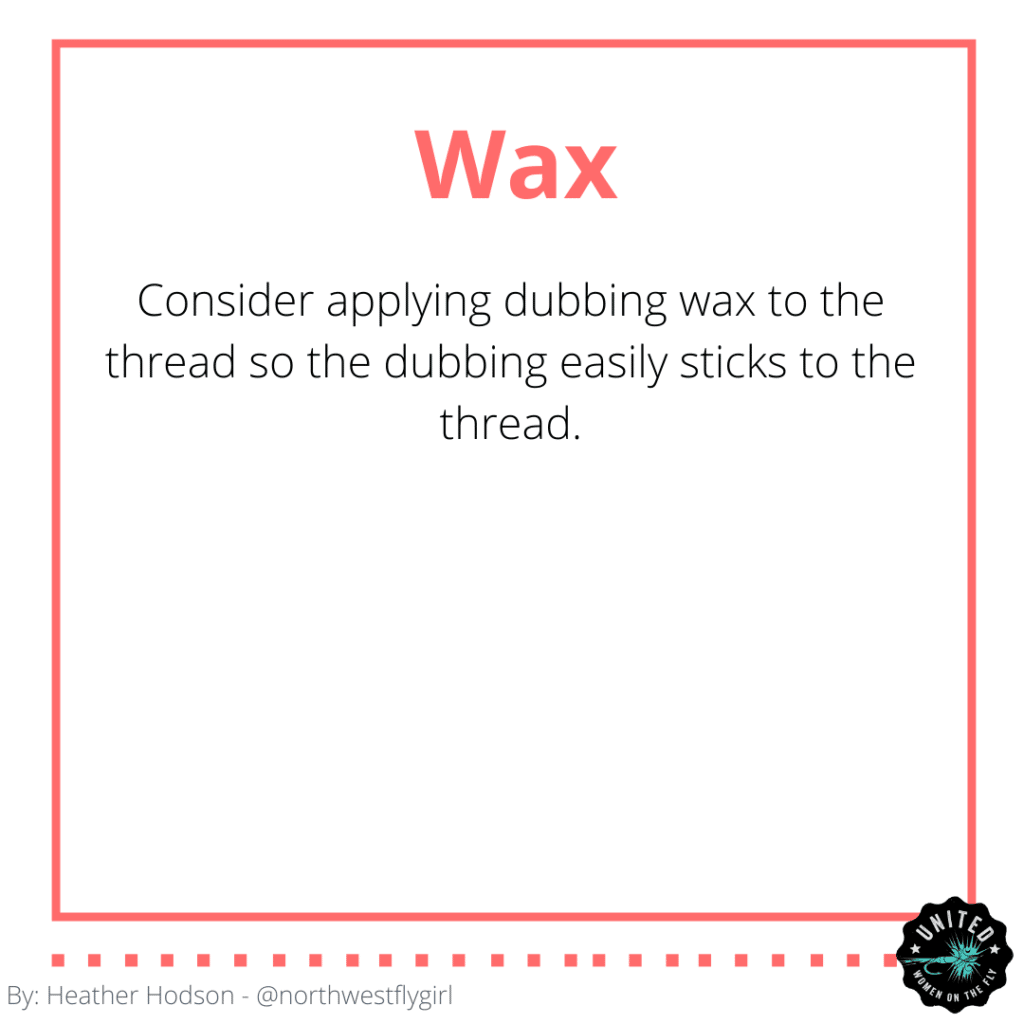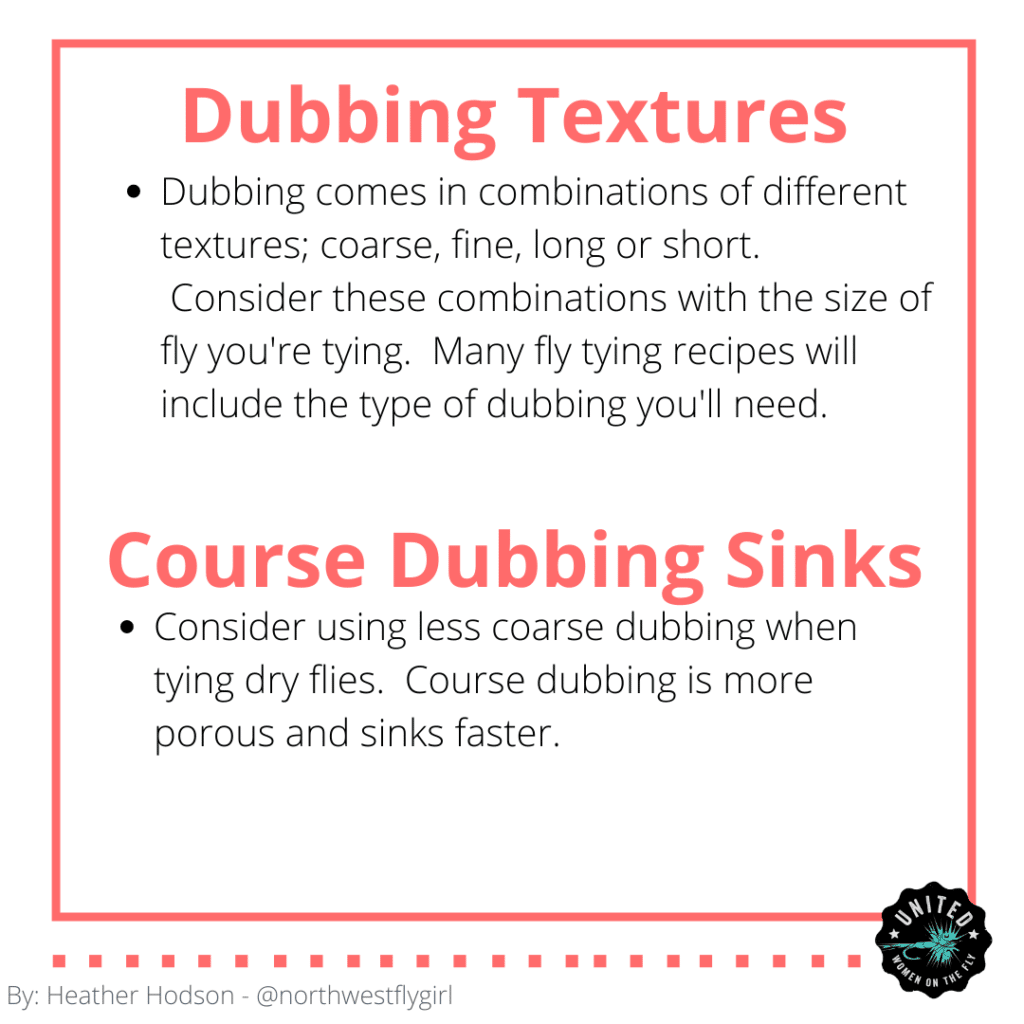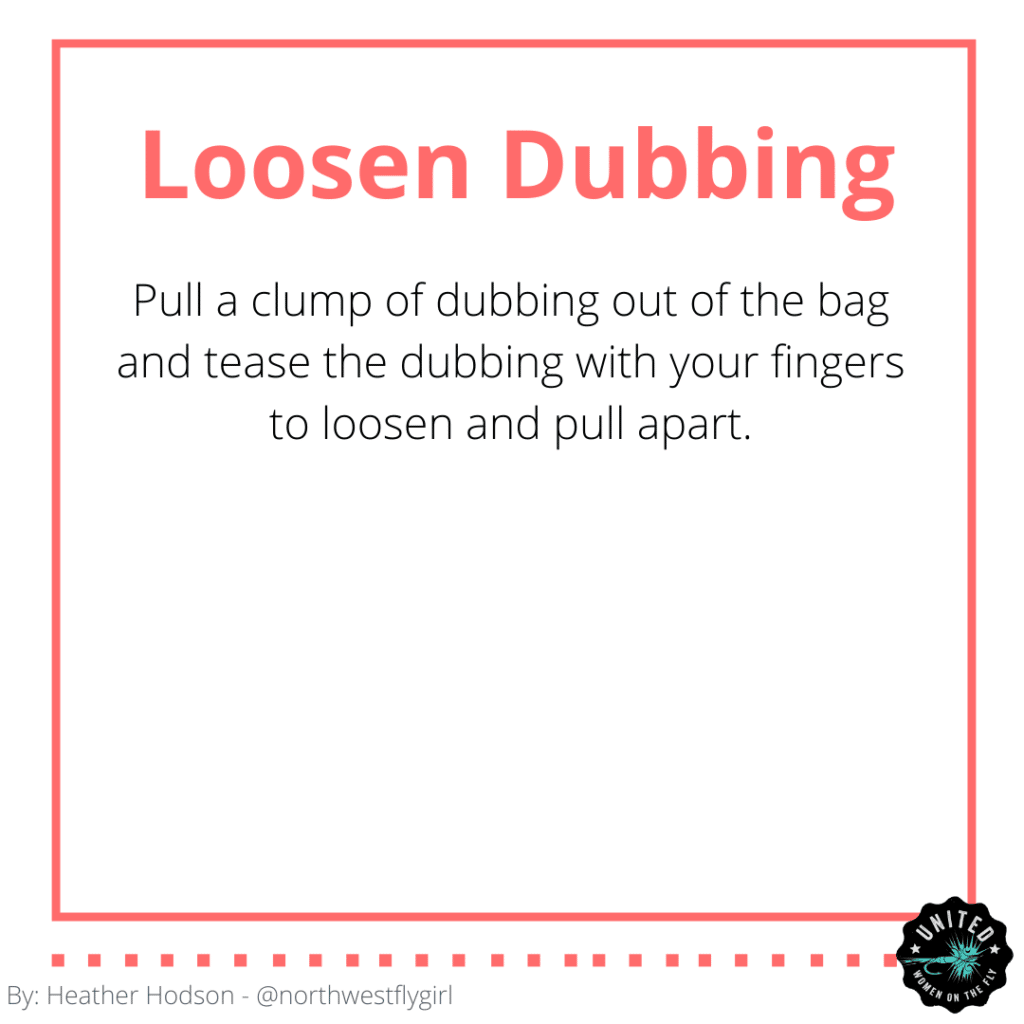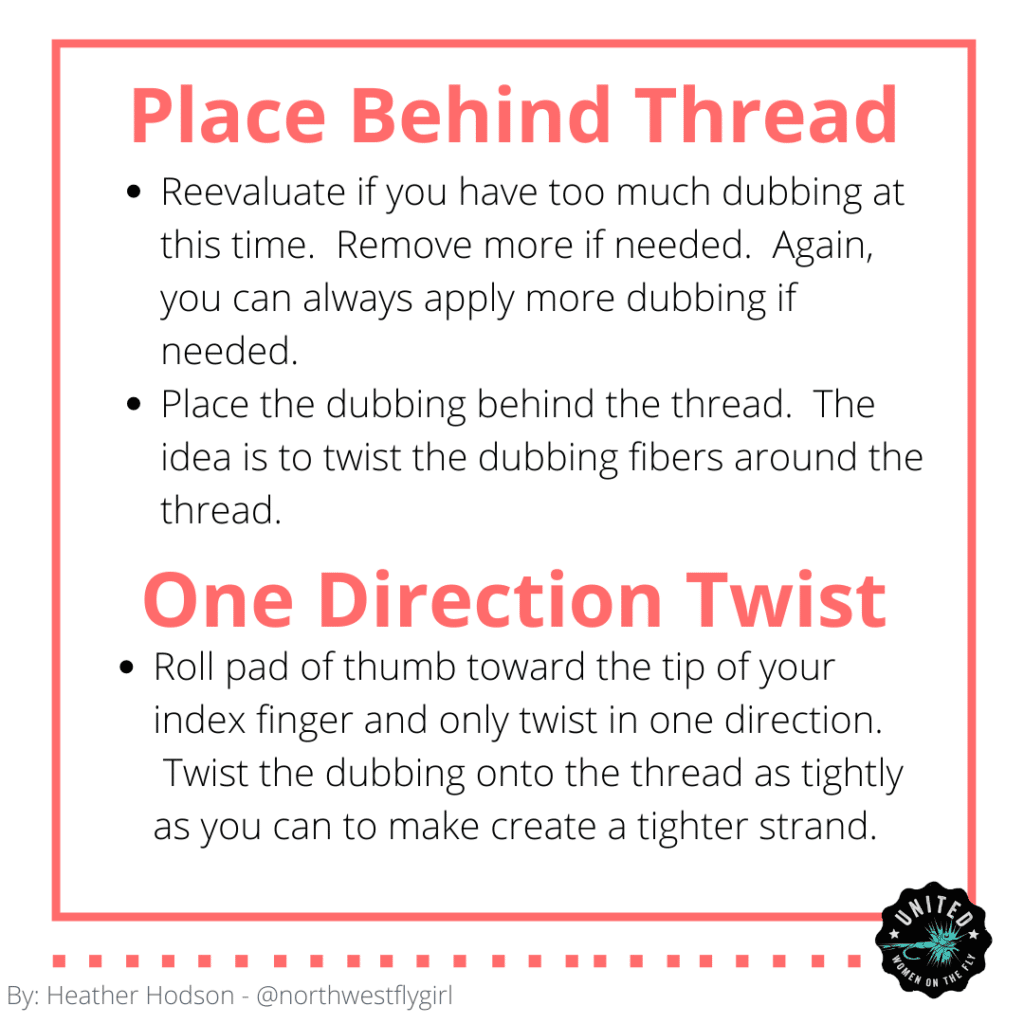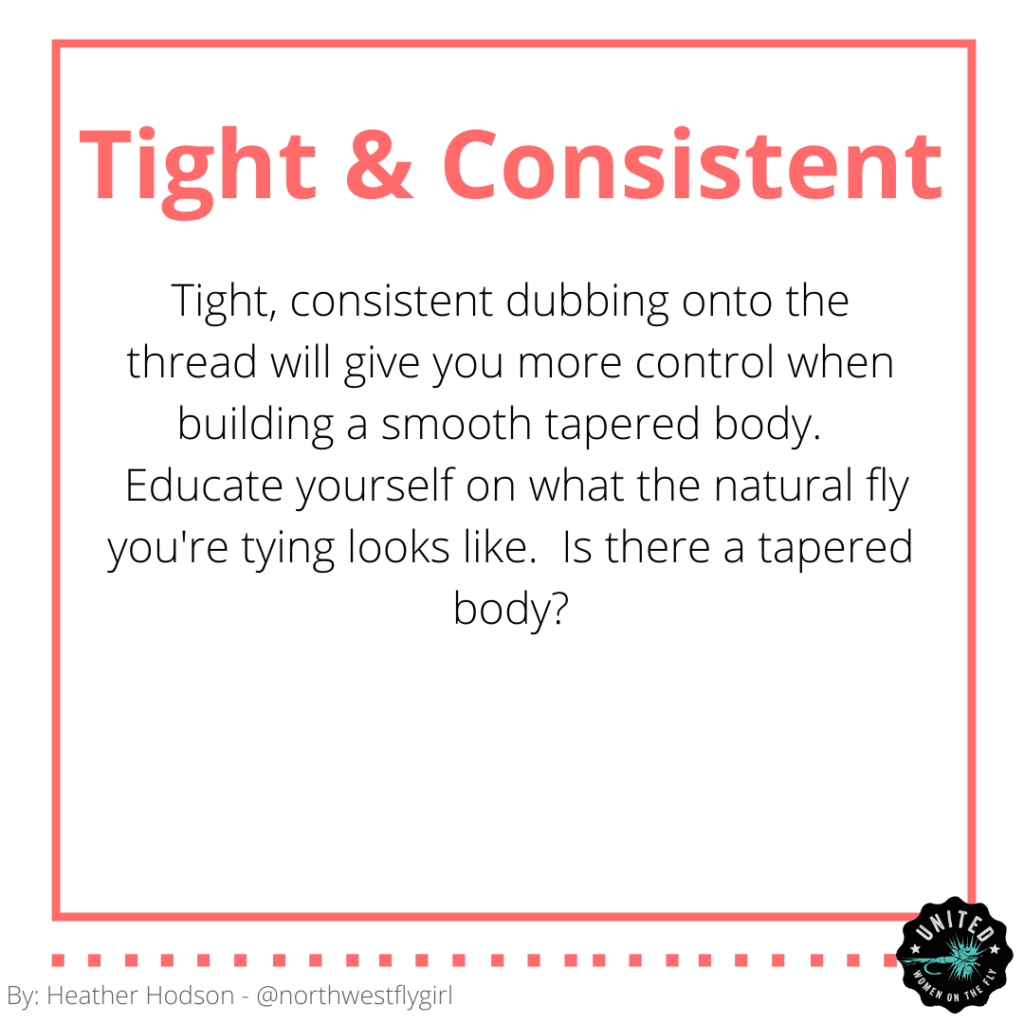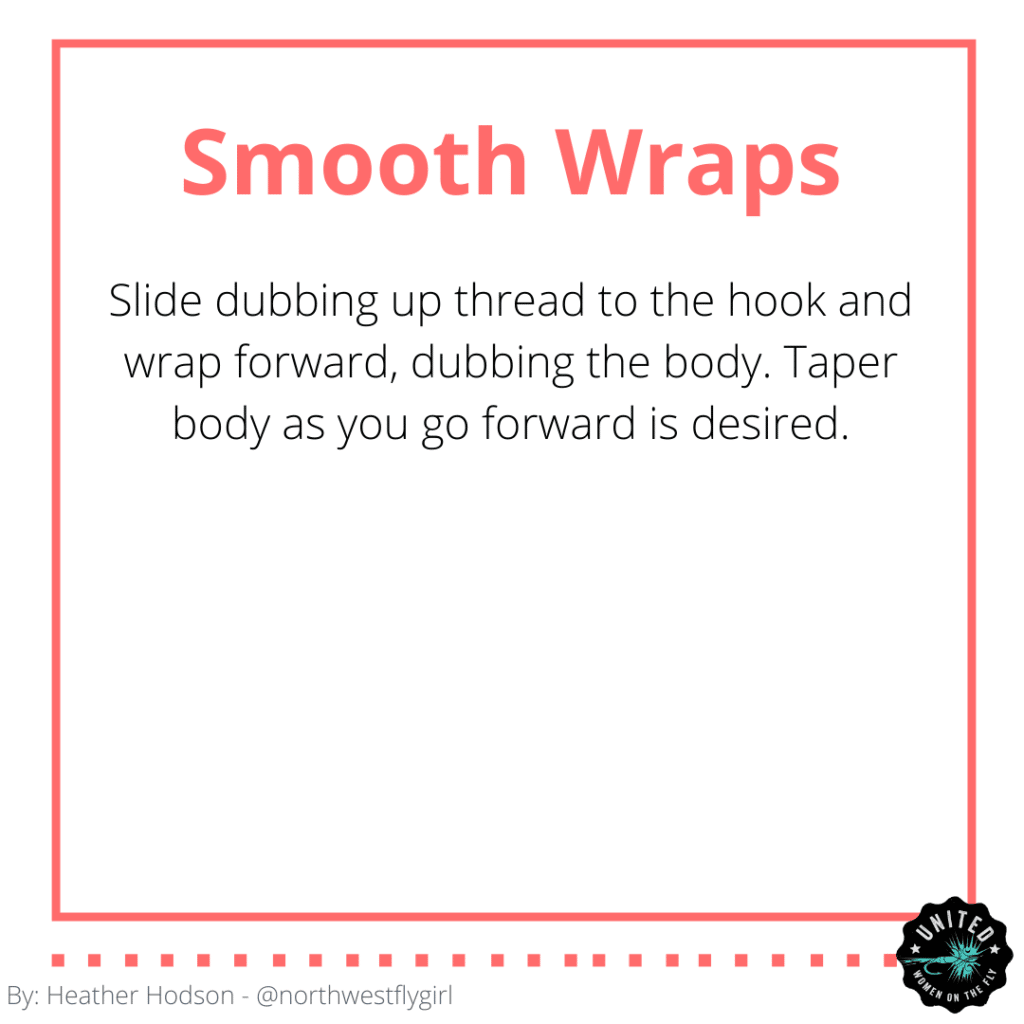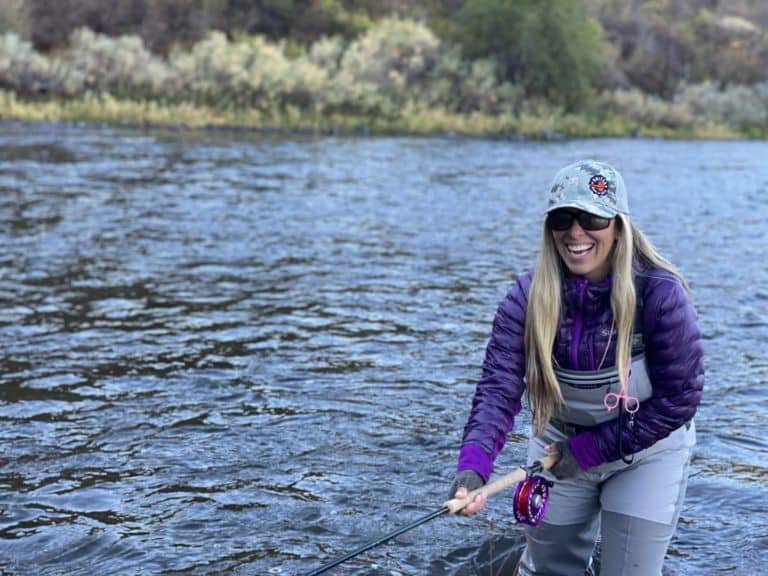Less is more with Dubbing
Fly Tying Week #2
There are several different dubbing techniques when tying flies. Dubbing is twisting natural or synthetic fur material tightly around tying thread. Such a simple technique can cause a lot of headaches. This is a quick and easy method to apply dubbing.
This week Heather Hodson helps with a few pointers on the dubbing technique. This is a quick and easy method to apply dubbing. Consider applying dubbing wax to the thread so the dubbing easily sticks to the thread. Connect with Heather at @northwestflygirl.
Start with a small amount, twist onto thread, wrap onto hook shank and continue the process.
Less is More
The #1 mistake that new fly tiers make with dubbing is using too much material. Less is More. You can always apply more dubbing if needed.
Thread Material Type
There are many fly tying thread materials. See our blog post on Tying Threads. Polyester threads (like Uni and Veevus) are more textured and grip dubbing better. You can still dub on all thread materials but textured will be easier.
Thread Material Size
The larger the thread the bulkier the dubbed body. Use less dubbing wraps with thicker thread.
Wax
Consider applying dubbing wax to the thread so the dubbing easily sticks to the thread.
Dubbing Textures
Dubbing comes in combinations of different textures; coarse, fine, long or short. Consider these combinations with the size of fly you’re tying. Many fly tying recipes will include the type of dubbing you’ll need.
Coarse Dubbing Sinks
Consider using less coarse dubbing when tying dry flies. Course dubbing is more porous and sinks faster.
Loosen Dubbing
Pull a clump of dubbing out of the bag and tease the dubbing with your fingers to loosen and pull apart.
Place Behind Thread
Reevaluate if you have too much dubbing at this time. Remove more if needed. Again, you can always apply more dubbing if needed. Place the dubbing behind the thread. The idea is to twist the dubbing fibers around the thread.
One Direction Twist
Roll pad of thumb toward the tip of your index finger and only twist in one direction. Twist the dubbing onto the thread as tightly as you can to make create a tighter strand.
Tight and Consistent Wraps
Tight, consistent dubbing onto the thread will give you more control when building a smooth tapered body. Educate yourself on what the natural fly you’re tying looks like. Is there a tapered body?
Smooth Wraps
Slide dubbing up thread to the hook and wrap forward dubbing the body. Taper body as you go forward is desired.
